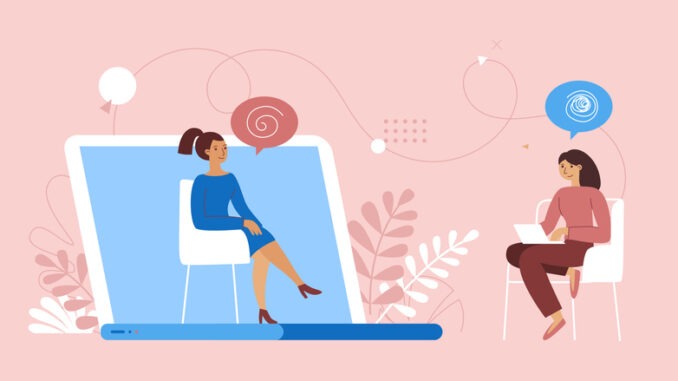
Janette Smeeton explores the new routes which COVID and technology opened for patient access to therapy
CREDIT: This is an edited version of an article that originally appeared on Derwent Rural Counselling Service
Everyone had to seek, and adopt, new ways of working during the COVID-19 pandemic; for those of us in the mental health sector we have had to act quickly to maintain crucial support.
Following government advice, DRCS suspended its face-to-face therapy sessions but we continue to provide our services across the whole of Derby City and Derbyshire by telephone and video calls. For those used to face-to-face therapy, the shift to using technology has opened up both advantages and challenges in the way our service users can access help and how we can monitor progress and increase our understanding of mental wellbeing.
Obviously, we had to change our usual procedures from face-to-face appointments in our safe, supported, bases across Derbyshire, to remote working via ‘phones, smartphones or tablets, with technology changing fast to accommodate this. The use of remote working now provides a crucial link for those now not able to access usual services.
Of course, our overriding commitment is to our clients. Our interventions are most effective when people like them, are engaged, and want to continue using them. This is key to our clinicians’ skills for providing effective treatment options remotely.
What are the advantages of using technology to offer mental health support?
Convenience – treatment can take place at a time and place to suit, avoiding travel, and can be ideal for those who have trouble with in-person appointments.
Anonymity – clients can seek treatment options without involving other people.
A new way to interact – technology may be a good first step for those who have avoided mental health care in the past.
Offers a service to more people – treatment can be offered to those in remote areas, or to people who need immediate help.
A novel way – some technologies might be more appealing than traditional treatment methods – which may encourage some clients to continue therapy and stay interested. Some people also feel safer to reveal more difficult topics for discussion.
Going forward – concerns to be addressed?
Technology can complement traditional therapy by extending an in-person session, reinforcing new skills, and providing support and monitoring. This new era of mental health technology offers great opportunities but also raises a number of concerns regarding therapeutic relationships.
For example, is it suitable for all? Remote access will not be suitable for all people and for all mental health conditions. Privacy might, however, be an issue; face-to-face meetings in closed rooms offer complete privacy; calls to clients need to be able to guarantee privacy.
Not being face-to-face, and being in the constraints of a therapy room, may be hard for some people who rely on rituals and memories associated with the therapy session and the therapist while the therapist’s physical presence, and non-verbal cues, often provide signs and signals. Non-verbal communication is more difficult to read online, even on a video call.
Some patients may also feel unsupported, vulnerable and frustrated after a call finishes.
The pandemic gave us the potential to widen access to therapy through the use of telephone, online and video sessions, which is positive. However, we must keep on checking how it affects the process so we can use it in the most beneficial way.
Data and feedback from clients indicates that treatment is proving to be just as useful and successful when provided by telephone and video as it was face-to-face; DRCS’ client recovery rates remain at record levels and have substantially exceeded what was expected.
The wait time for therapy will depend on the type of therapy needed for individual clients, but currently for counselling this is often only two weeks from the assessment.
All this bodes well for the future, but we must maintain a careful watching brief.


Be the first to comment